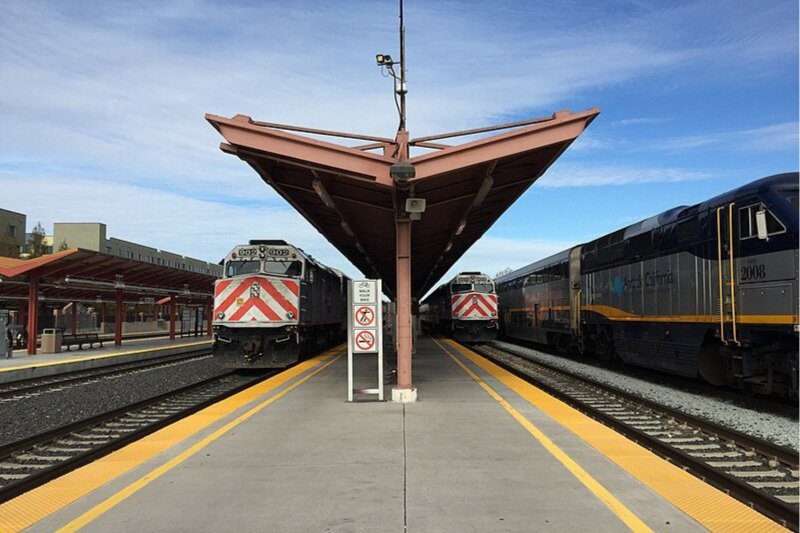
Image by Wikimedia Commons
Big surprise: the State’s sluggish money-sucker of a High-Speed Rail project asks to be accommodated by new (either elevated/tunneled) infrastructure at its SJ station. Meanwhile, the Caltrain HSR Compatibility Blog asserts that this costly renovation is a superfluous idea, and that sharing Diridon’s platforms with Caltrain makes the most fiscal and logistical sense. Read Part I here.
With San Jose and VTA suffering from a severe case of BART tunnel vision, it’s important to take a more holistic view of what it means to provide the residents and workers of San Jose with a top-notch rail transit network. …
2) Build high-speed rail at grade.

Building everything at-grade would save about a billion dollars (by foregoing about $250M for elevated approach tracks, $500M for the elevated Diridon station complex itself, and $500M for the “iconic” but entirely avoidable viaduct to cross the 87/280 freeway interchange to the south). An added benefit of the at-grade approach to San Jose is higher speeds and lower trip times. The extremely tight 1000-foot curve radius that connects Diridon to an “iconic” viaduct saps the ‘H’ out of HSR by limiting trains to just 50 mph, while the existing curve through the Gardner neighborhood could be grade separated and operated at 65 mph.
Rather than cower in the shadow of a new “iconic” bridge proclaiming loudly that they are just a flyover neighborhood, residents of San Jose’s Gardner district would gain a grade separation at Virginia Street, improving neighborhood access that has been so brutally cut off by the I-280 and SR-87 freeways, and eliminating the sound of railroad horns–even freight train horns.
This article originally appeared in the Caltrain HSR Compatibility Blog. Read the whole thing here.
RELATED:
- Libertarian president hopefuls on CA HSR: “Cut and run” the only option left
- CA HSR advances at snail’s gallop, leaving trail of wasted taxpayer dollars
- Assessing CA HSR’s poxy track record
Follow Opportunity Now on Twitter @svopportunity

